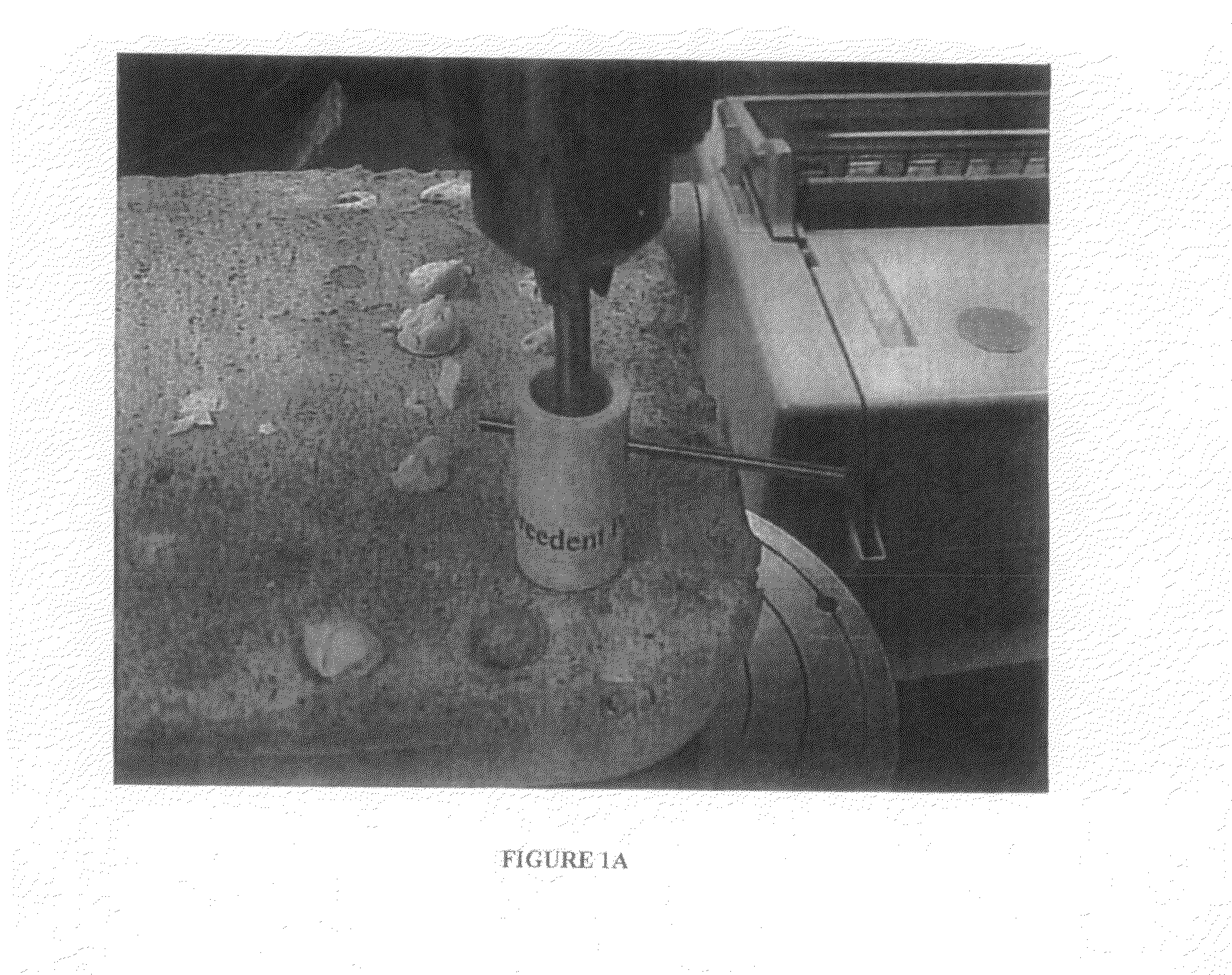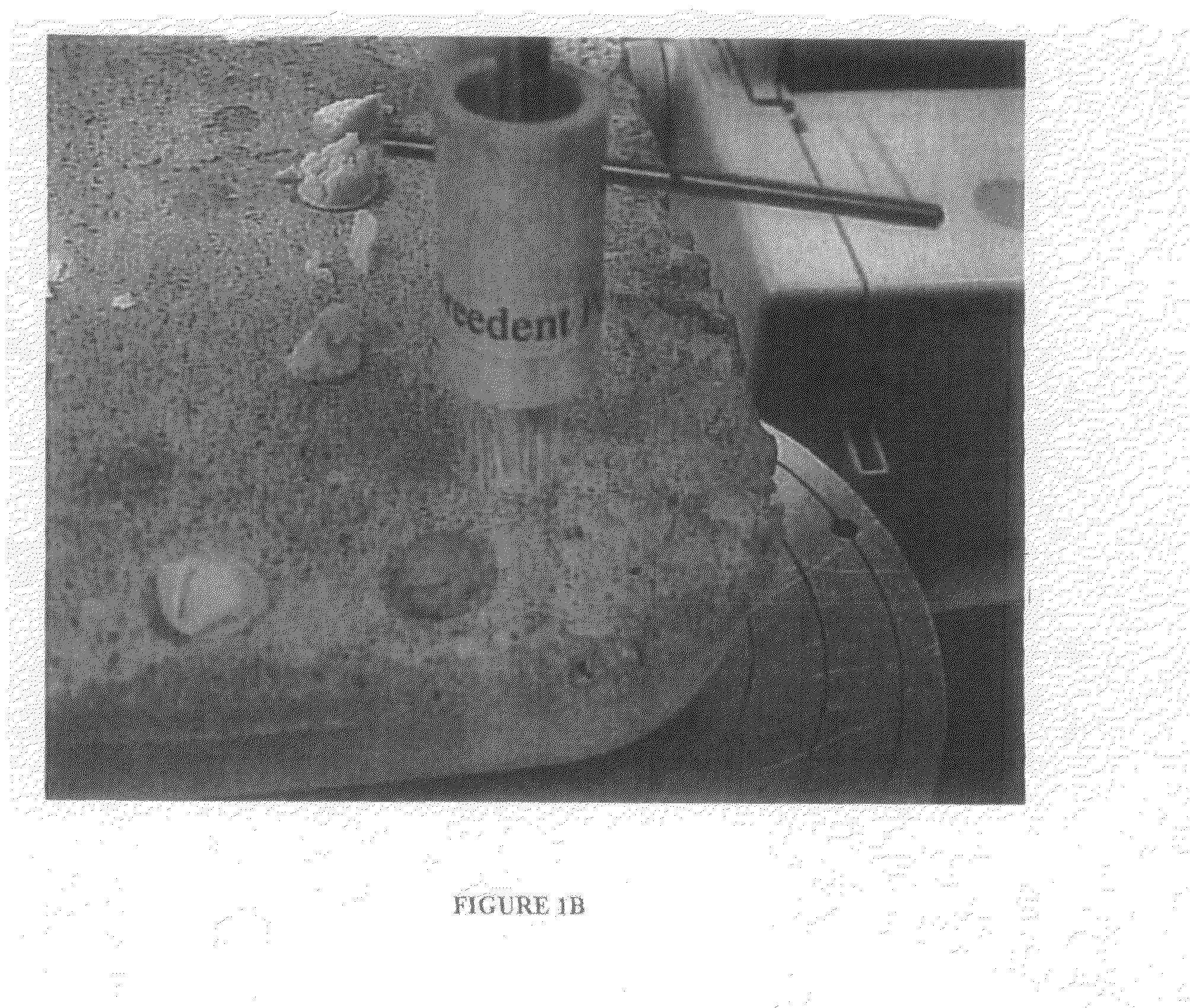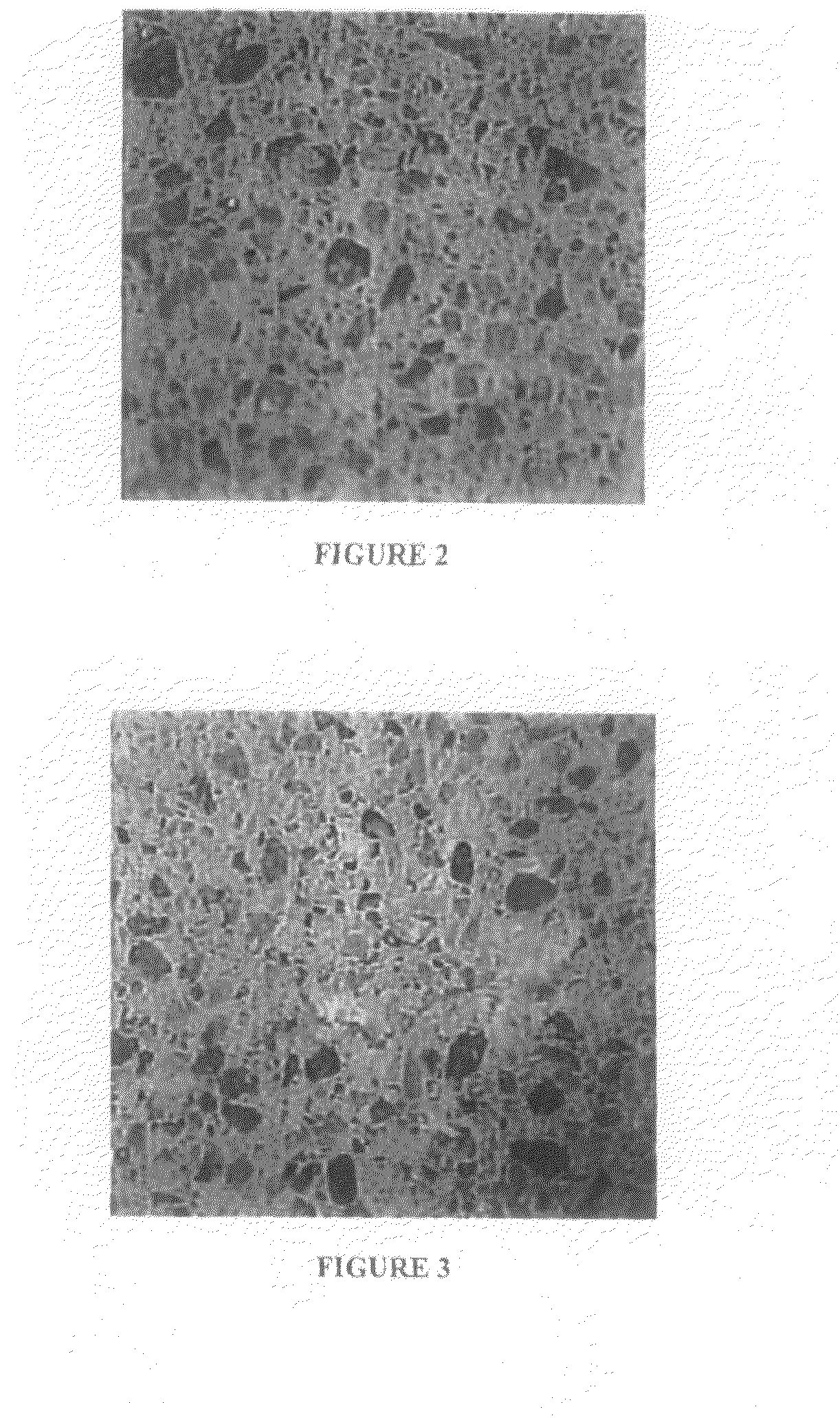Degradable chewing gum
a chewing gum and degradation technology, applied in chewing gum, packaging, food science, etc., can solve the problems of difficult softening of elastomers in absence of elastomer solvents, compromising taste, and unenvironmental friendly conventional chewing gum products, and achieve enhanced degradation properties and reduce stickiness
- Summary
- Abstract
- Description
- Claims
- Application Information
AI Technical Summary
Benefits of technology
Problems solved by technology
Method used
Image
Examples
example 1
[0527]
TABLE 1INVENTIVE GUM BASE COMPOSITIONS A-F% by weightComponentABCDEFPoly-42.9642.9642.9632.6530.9330.93vinylacetate(VinnapasB 30 sp)Triacetin7.047.047.045.355.075.07GMS12.865.714.299.148.298.29Butyl Rubber000000Poly-105105105isobutylene(OppanolB 50 SF)Hydrogenated7.1414.2910.7122.8620.7120.71cottonseedoil 70° C.meltingtemperatureHydrogenated10555510cottonseedoil 45° C.meltingtemperatureTalc202020202020Total1001001001001001001acronym for glycerol monostearate
TABLE 2INVENTIVE GUM BASE COMPOSITIONS G-IComponentGHIPolyvinylacetate30.9342.9635.91(Vinnapas B 30 sp)Triacetin5.077.045.89GMS6.864.296.8Butyl Rubber000Polyisobutylene1057.2(Oppanol B 50 SF)Hydrogenated17.1410.7117cottonseed oil 70 C.melting temperatureHydrogenated10107.2cottonseed oil 45 C.melting temperatureTalc202020Total100100100
[0528]Gum bases are prepared as set forth in Tables 1-2 above. In particular, inventive gum base compositions A-I are prepared as follows:
[0529]A Master Batch (masticated elastomer) was prepare...
example 2
[0532]Inventive chewing gum compositions using the inventive gum base compositions A-I were chewed for 30 minutes and the cuds deposited on a concrete brick inside sample holders made out of 1.25 cm diameter PVC pipe. FIGS. 1A and 1B are photographs that illustrate how gum samples were applied to a brick and subjected to an adhesion test as described herein. The cuds were compressed to imbed them in the concrete. The brick with the imbedded cuds was conditioned for 72 hours at room temperature. Instron Corporation (Norwood, Mass.) universal material testing machine was used to measure the force required to remove the cuds from the concrete surface. When the sample was completely removed off the surface of the concrete the reading was a true measurement of adhesion. Reliable adhesion reading could not be obtained for the tested commercial samples since they broke apart (cohesive failure) during testing. The adhesion reading for those samples was assumed to be higher than the obtained...
example 3
[0538]
TABLE 4INVENTIVE GUM BASE COMPOSITIONS M-S% by weightComponentMN0PQRSPolyvinylacetate42.98321543404340(Vinnapas B 30 sp)1Polyvinylacetate00280000(Vinapas B 1.5 sp)2Triacetin2.585.252.467.056.567.056.56GMS318.1517.756.544.95444.44Butyl Rubber9.550000108Polyisobutylene01010101000(Oppanol B 50 SF)4Hydrogenated9.5515181510108cottonseed oil 70 C.melting temperatureHydrogenated00009.445.956cottonseed oil 45 C.melting temperatureTalc17.19202020202020Starch0000007Total1001001001001001001001available from Wacker Specialties2available from Wacker Specialties3acronym for glycerol monostearate4available from BASF Corp.
[0539]Gum base compositions are prepared as set forth in Table 4 above. In particular, inventive gum bases M-S are prepared in similar manner as described for the compositions described in Tables 1 and 2.
PUM
 Login to View More
Login to View More Abstract
Description
Claims
Application Information
 Login to View More
Login to View More - R&D
- Intellectual Property
- Life Sciences
- Materials
- Tech Scout
- Unparalleled Data Quality
- Higher Quality Content
- 60% Fewer Hallucinations
Browse by: Latest US Patents, China's latest patents, Technical Efficacy Thesaurus, Application Domain, Technology Topic, Popular Technical Reports.
© 2025 PatSnap. All rights reserved.Legal|Privacy policy|Modern Slavery Act Transparency Statement|Sitemap|About US| Contact US: help@patsnap.com



